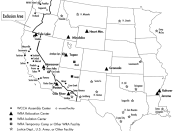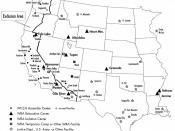_The Japanese Internment_ The definition of intolerance is refusing to accept or tolerate a certain race, religion or law (Webster 1543). Throughout time, humans have acted intolerable towards certain actions. One example of intolerance is the Japanese Internment. This occurred after the Pearl Harbor attack.
The intolerance went both ways in this incident because the Americans didn?t tolerate having Japanese people living with them and the Japanese people were opposed to being held in prison camps, but they later tolerated it. The Japanese internment had 3 different phases. The Americans opposing the Japanese created an ?Executive Order? to remove them, the action of the soldiers relocating the Japanese families to different areas, and then the rescinding of the ?Executive Order? and the effects of being held in the prison camps (children-of-the-camps.org/resources/books) It was December 7th, 1941. It was in the morning on Oh-ho. ?I saw a bunch of airplanes coming in,? said Admiral Kimmel.
?They had the red sun on their wings. I thought I saw death coming by sky that day. I knew that they would come, that?s why we had a base in Pearl Harbor. It just happened so fast.? (Admiral Kimmel) The attack from the Japanese hit America with an impact as great as the attack from Osama Bin Laden on September 11, 2001. Many Americans were afraid of being over powered. As the war went on with Japan the American citizens felt even more insecure from Japanese people living near them. February 19, 1942... President Roosevelt answered the West Coast?s plee to ensure security by removing the Japanese people living there. Roosevelt signed the Executive Order 9066. The order stated that all Japanese people with original ancestory were to be relocated into one of 10 facilities. (Grapes 37) The Japanese people were to be evacuated from...


